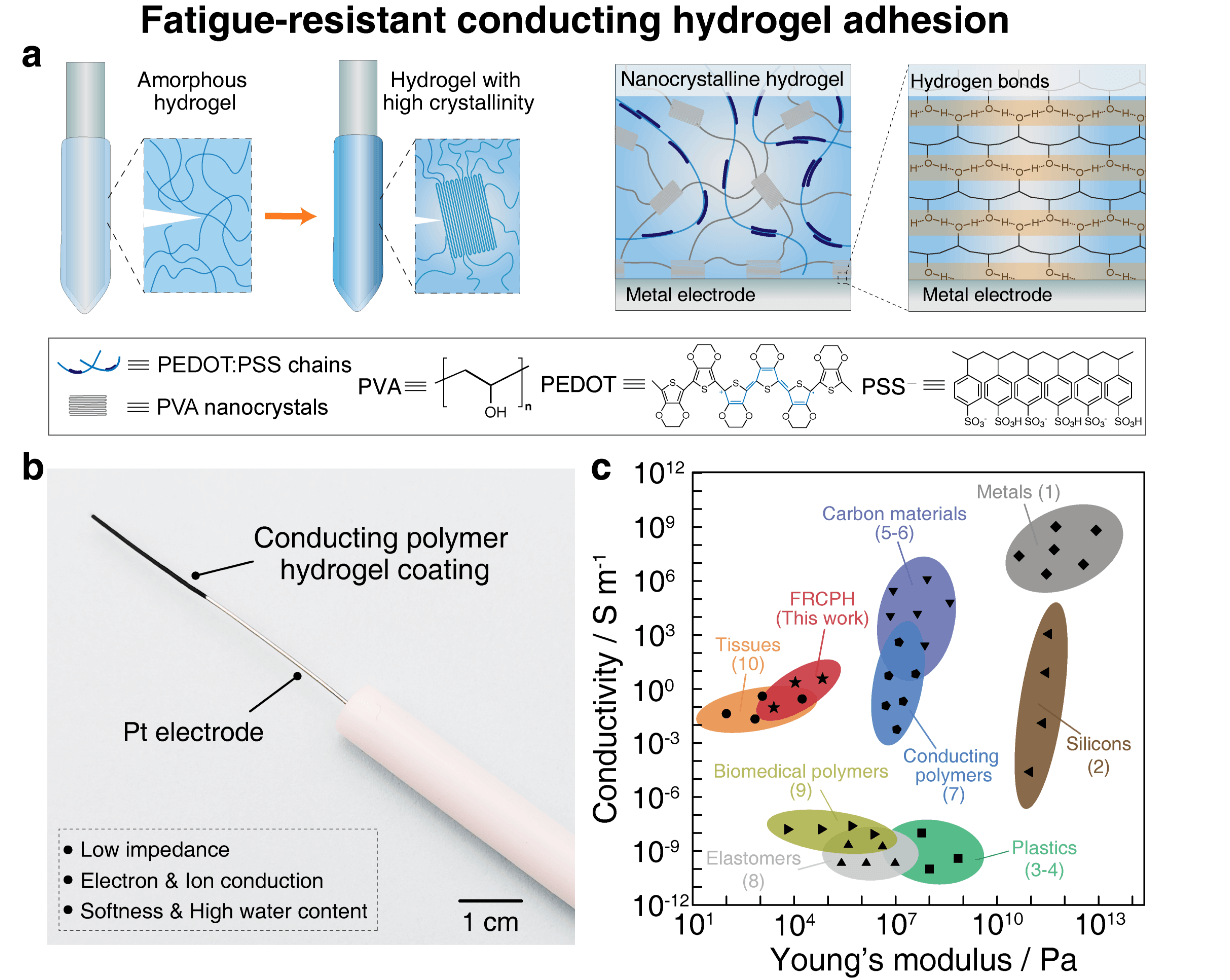Conductive polymer hydrogels (such as PEDOT: PSS hydrogels) are widely used in bioelectrode coatings to build mechanical/electrical adaptive interfaces, and can be used for diagnosis, early warning, and follow-up treatment of various physiological disorders and diseases due to their excellent bio tissue like flexibility, conductivity and biocompatibility. However, due to the inherent brittleness of PEDOT: PSS hydrogel, in the long-term electrical interaction process, this kind of hydrogel coating is prone to fatigue damage (such as crack generation or coating shedding), resulting in electrode function failure and biological tissue damage (such as inflammation generation or scar formation), which greatly limits their reliability in practical applications. Therefore, building a long-term stable and efficient conductive polymer hydrogel electrode coating/interface can effectively solve the major challenges in the field of bioelectronics at this stage, and provide technical support for the development of emerging implantable bioelectronics.

Conductive polymer hydrogels (such as PEDOT: PSS hydrogels) are widely used in bioelectrode coatings to build mechanical/electrical adaptive interfaces, and can be used for diagnosis, early warning, and follow-up treatment of various physiological disorders and diseases due to their excellent bio tissue like flexibility, conductivity and biocompatibility. However, due to the inherent brittleness of PEDOT: PSS hydrogel, in the long-term electrical interaction process, this kind of hydrogel coating is prone to fatigue damage (such as crack generation or coating shedding), resulting in electrode function failure and biological tissue damage (such as inflammation generation or scar formation), which greatly limits their reliability in practical applications. Therefore, building a long-term stable and efficient conductive polymer hydrogel electrode coating/interface can effectively solve the major challenges in the field of bioelectronics at this stage, and provide technical support for the development of emerging implantable bioelectronics.


 扫一扫加微信
扫一扫加微信